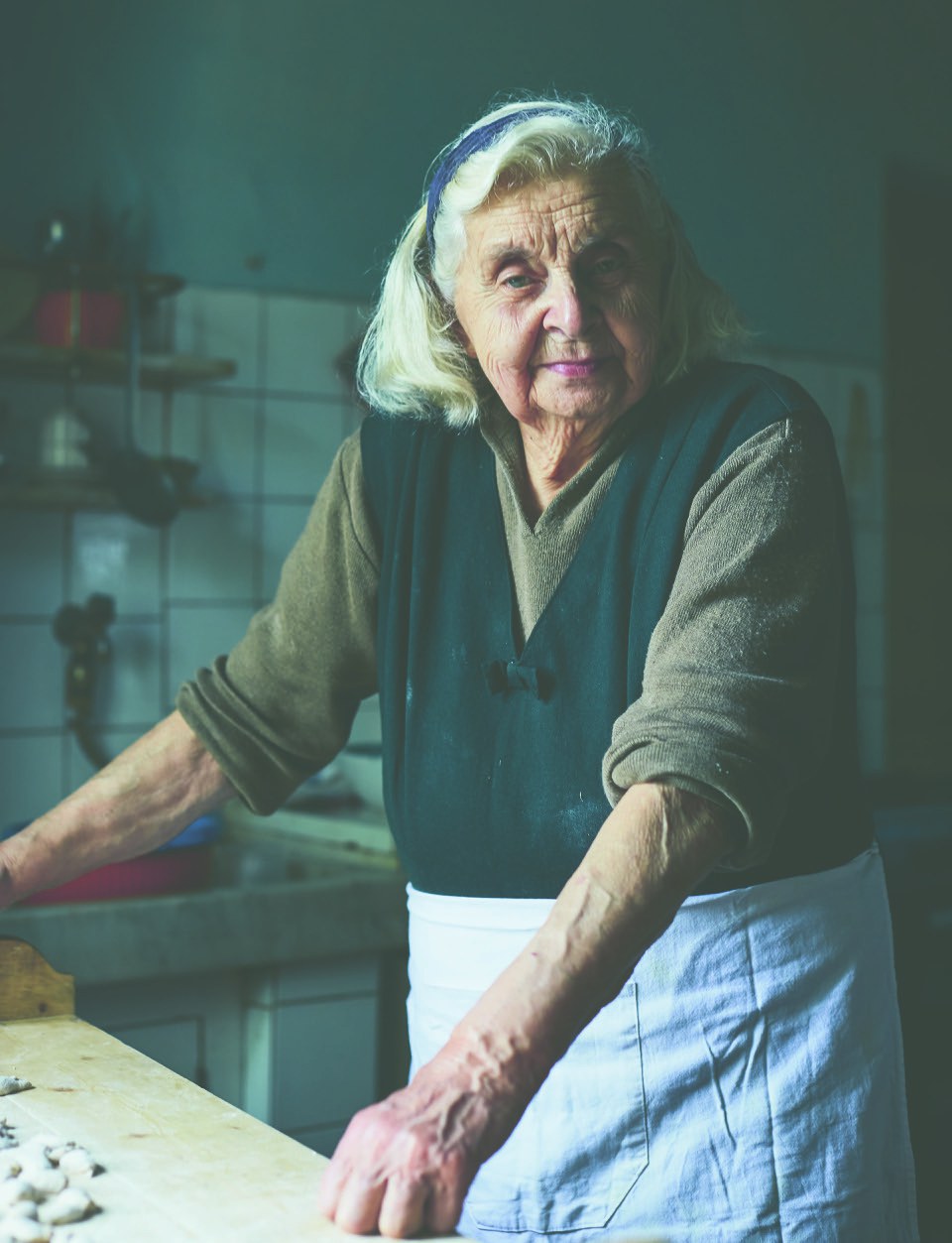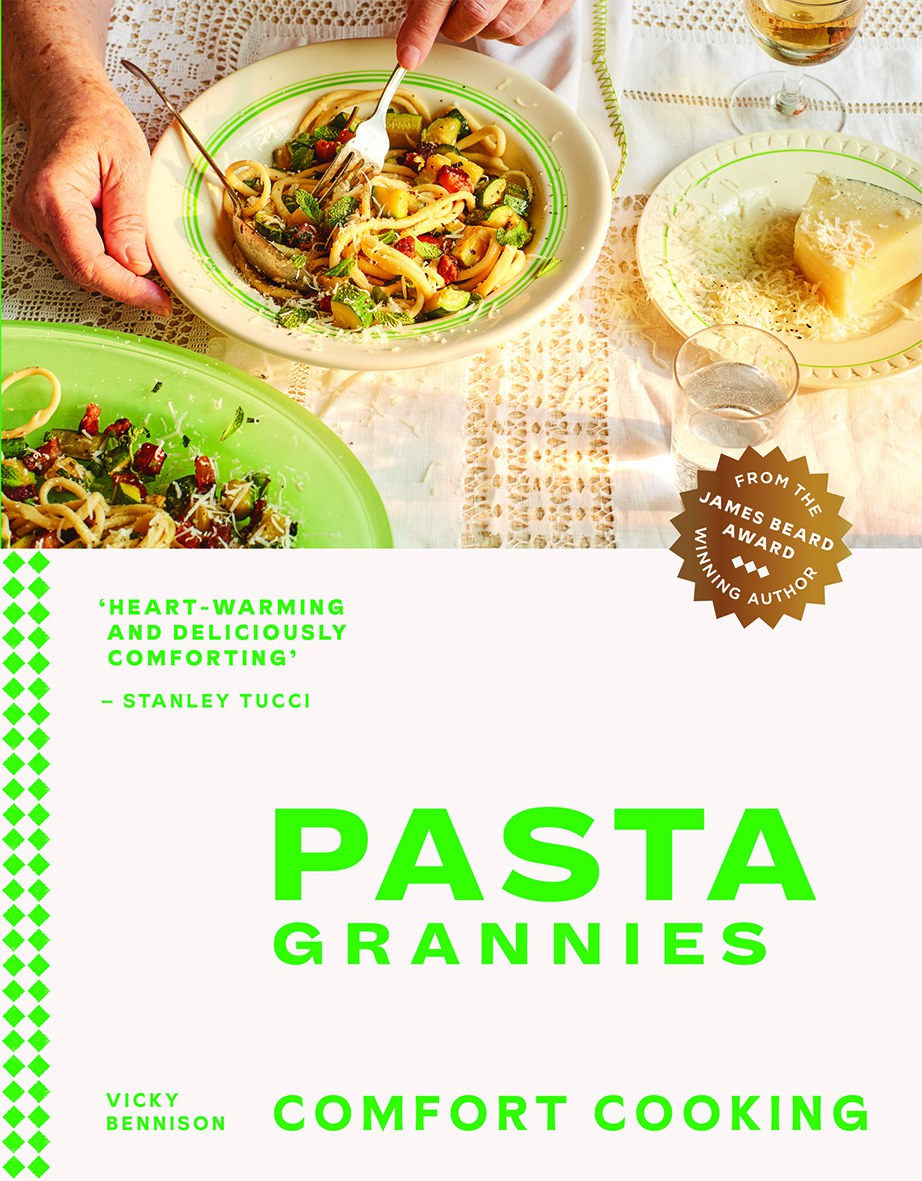Vicky Bennison introduced a YouTube audience to the Pasta Grannies back in 2015. The series begat a cookbook and now Bennison returns with a follow up of recipes from the Italian nonne with a focus on more comfort cars.
With recipes for labor intensive, Sunday baked pasta to a gnocchi from a 91-year-old woman who had difficulty understanding why anyone would want to film her, Bennison’s new book is “Pasta Grannies: Comfort Cooking.”
"PINA’S GNOCCHI DI CASTAGNE CON PESTO"
CHESTNUT GNOCCHI WITH WALNUT PESTO FROM LIGURIA
PREP 2 hours SERVINGS 4–6
‘I don’t understand why you come all the way up here to film me make gnocchi; can’t you make them yourselves?’ 91-year- old Pina thought we were mad not to have this life skill. Like Cicci (on page xx), Pina lives in the mountains behind Genova in Liguria, though they live about 2 hours’ drive from each other. Pina ran the village bakery and shop for many years, and still has a few shelves with emergency packets of pasta and tinned tomatoes for when her neighbors get caught short. She used to carry the provisions on her back for the last two kilometers before the road got built, and even now only three-wheeled scooters can navigate the village’s cobbled paths.
Making the most of what you have is second nature to Pina: she uses walnuts because pine nuts are too expensive, she grows her own potatoes, and the foraged chestnuts make more costly wheat flour go further. So, in that spirit, if you don’t have chestnut flour, make these using just wheat flour.
Ingredients
FOR THE GNOCCHI
- 500 g (1 lb 2 oz) floury potatoes
- 150 g (5 oz/11⁄4 cups) 00 plus an extra 35–40 g (1–11⁄2 oz) for the board
- 50 g (13⁄4 oz/1⁄3 cup) chestnut flour
- 5 g (1 teaspoon) salt
- freshly ground pepper, to serve
FOR THE PESTO
- 100 ml (31⁄2 fl oz/scant 1⁄2 cup) extra-virgin olive oil
- 30 g (1 oz) basil
- 50 g (13⁄4 oz) grated Parmigiano Reggiano
- 50 g (13⁄4 oz) thick cream
Instructions
- First, make the gnocchi. Pina boils her potatoes with the skin on; an alternative is to bake the potatoes in a moderate oven as this gives them a nice fluffy texture. Whichever method you choose, once the spuds are soft, remove the skins and mash the flesh. Have your extra flour for the board to hand and don’t leave the mash to cool: dump it straight onto your wooden board while it’s still steaming, using a spoon. This moisture helps you to make a good dough. Mix the flours and salt and mush the mixture into the mash, then gently knead the mixture until you obtain a smooth non-sticky dough that does not break apart. Stop as soon as you get to this point; you don’t want to overwork the dough.
- Use some of the extra flour to dust your board and roll out ropes of dough about 2 cm (3⁄4 in) in diameter and then cut each rope into two-finger-wide pieces. Use the same two fingertips to press into each gnocco and pull it back gently across the board to flatten and curl the dough. The results are gnocchi which look like thick or rustic cavatelli. Keep them well floured and spread out.
- For the pesto, put the garlic, walnuts and oil into the bowl of a food processor and blitz until you have a rough paste. Now add the basil and blend again, before adding the Parmigiano. You want a thick, smooth sauce. Use a spatula to scrap the pesto into a bowl and stir through the cream.
- Bring a large saucepan of heavily salted water to the boil. Tip in the gnocchi and give them a good stir to stop them from sticking. Once the water has returned to the boil, try the gnocchi every 30 seconds or so to see if they are cooked. When they are done, drain them through a colander.
- Pesto should never be cooked, so place the gnocchi in a warm bowl and dress them as you would a salad with the pesto.
- Serve with plenty of freshly ground black pepper.
Recipes excerpted with permission from “Pasta Grannies Comfort Cooking” by Vicky Bennison, published by Hardie Grant Books

Living on the top of a mountain, 91-year-old Pina has led a life of self-sufficiency and making due of her surroundings.The view from her kitchen sink is across the mountaintops of Liguria. Photo by Lizzie Mayson.

In a follow up to cookbook sprung from a YouTube series, Vicky Bennison focuses on the comfort of Italian nonne. Photo courtesy of Hardie Grant Books.
